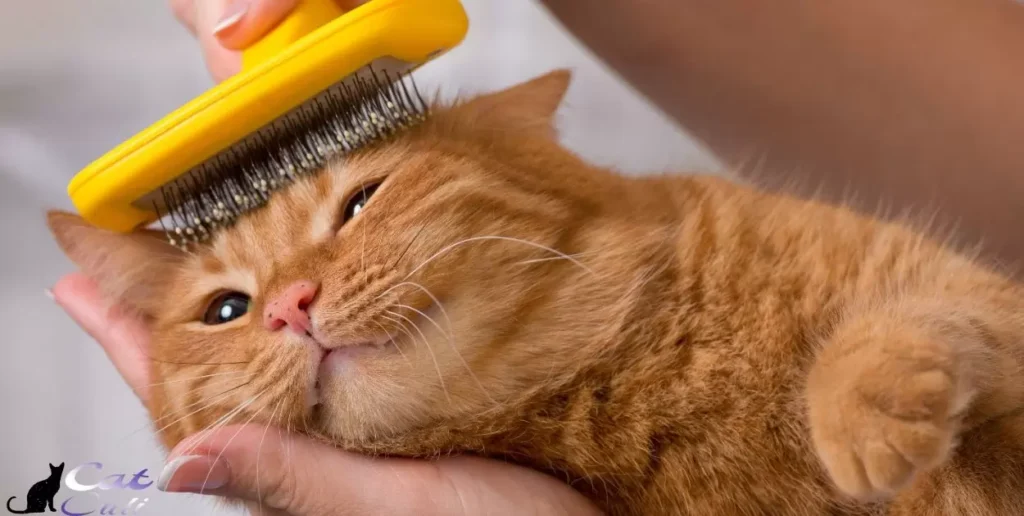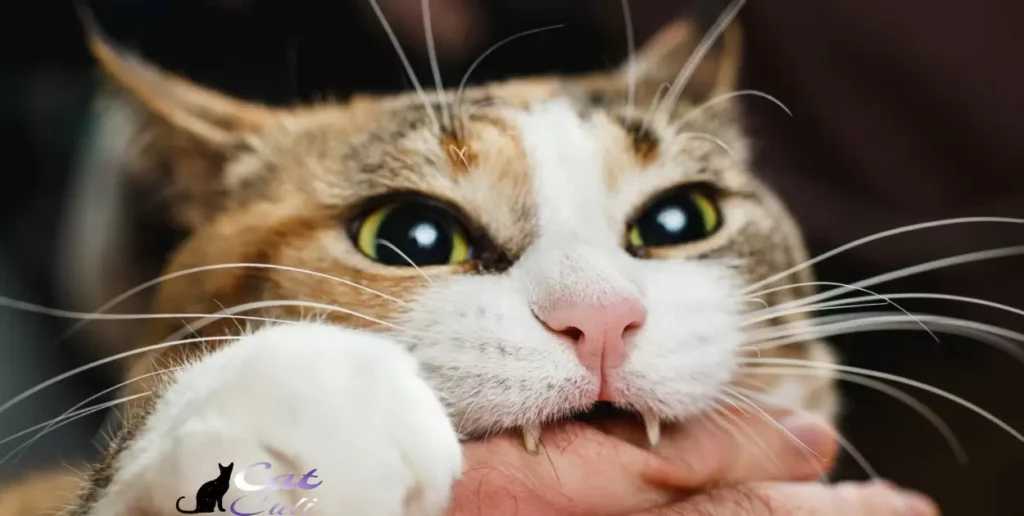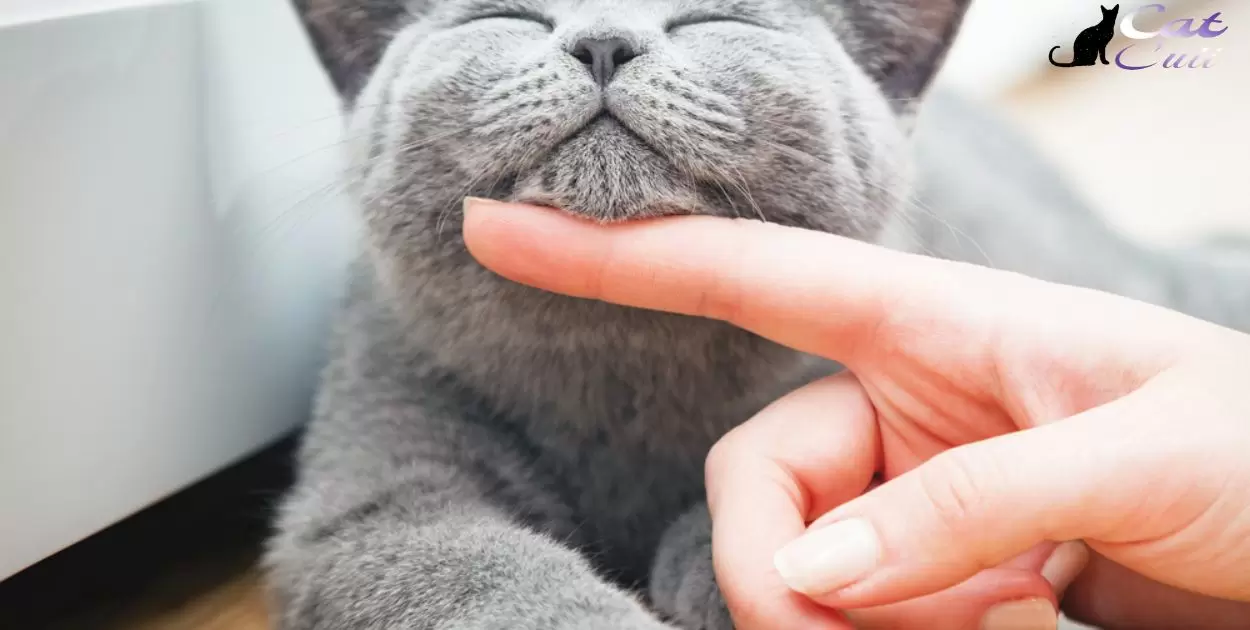Cats’ fur does not actually get softer when they are happy. A cat’s fur softness is dependent on grooming and health, not emotions. When cats feel content, they are more likely to groom themselves frequently by licking their fur. This self-grooming helps distribute skin oils evenly through their coat, helping it stay soft and shiny. Proper nutrition also contributes to a healthy, soft coat. But a cat’s happiness itself does not physically change the texture of its fur.
Do cats’ fur get softer when they’re happy? Many cat owners claim their cat’s coat seems extra soft and silky when it is purring or being affectionate. This observation has led to the popular belief that a cat’s fur physically changes and becomes softer when it is content. But while happiness may prompt more grooming behavior and affect fur appearance, a cat’s hair texture itself does not truly grow softer due to emotion.
While popular opinion states that relaxed, happy cats have measurably softer fur, scientific evidence does not support this. A cat’s coat texture is dependent mostly on genetics, grooming, hydration and diet – not emotions. However, when content, cats do tend to self-groom more often, distributing oils from their skin that help fur feel smooth and shiny. But the hair strand texture remains unchanged.
Cat’s Fur Softness Related To Cat Food
Cat food can impact the softness and health of a cat’s fur. Feeding your cat a high-quality diet with good sources of protein, fatty acids, and nutrients can lead to softer, shinier fur.
Poor quality cat food or nutritional deficiencies can cause dull, brittle fur. Switching to a better quality cat food, appropriate for your cat’s age and health condition, can often noticeably improve their coat. You can discuss your cat’s diet with your veterinarian to determine if it is providing everything needed for healthy skin and a soft, shiny coat.
How Can I Tell If My Cat’s Fur Feels Softer?
You can tell if your cat’s fur feels softer by regularly petting and brushing your cat. Get accustomed to how their fur normally feels so you can notice subtle changes in texture over time. Softer fur will feel smooth, silky and glossy rather than coarse or brittle.
It’s best to pet them in a consistent spot each time, such as along their back or sides, to accurately compare. Brushing also removes dead hairs and distributes oils for added softness. If your cat enjoys being brushed, regular gentle brushing sessions can help reveal improvements in fur softness.
Should I Pet My Cat To Check If Its Fur Is Soft?
Gently petting your cat can help you evaluate if their fur coat is soft or not. Use a flat, open hand to stroke along their body, feeling for areas of roughness versus silkiness. Focus on spots your cat likes being pet, where they will relax into your hand.
Avoid petting too lightly or quickly, which doesn’t allow accurately assessing texture. Pet at your cat’s comfort level, allowing them to move away at any point to avoid over- stimulation. Regularly pet the same areas to accurately gauge changes in softness over time. Consider combining with brushing to fully check fur texture.
What Makes My Cat’s Fur Feel Soft Or Coarse?
The softness or coarseness of a cat’s fur depends on several factors. Healthy fur will feel soft and smooth. Medical issues, skin conditions, nutritional deficiencies, dehydration, stress or anxiety can all negatively impact fur, making it feel dry, brittle or coarse.
Environmental irritants, excessive shedding or allergies can also degrade fur texture. Ensuring your cat’s basic needs are met can help maintain healthy, soft fur. Discuss significant fur texture changes with your veterinarian to identify and address any underlying causes.
Softness Of A Cat’s Fur Indicate Happiness

The softness of a cat’s fur does not necessarily indicate happiness. While a healthy, well-groomed coat can be soft, there are many other factors that contribute to a cat’s happiness, such as a stimulating environment, positive interactions with humans and other pets, a consistent routine, and access to food, water, litter, rest, and play.
Quality Cat Food Lead To Softer Cat Fur
Quality cat food has nutrients for healthy fur. Nutrients like protein and omega-3 fat. Skin makes oils from the nutrients. Oils make fur soft and shiny. Low-quality food lacks these nutrients. Then skin makes less softening oil.
| Quality of Cat Food | Impact on Cat Fur |
| High Quality | More nutrients for skin and fur health. Skin makes more oils that soften fur. |
| Low Quality | Lacks nutrients for healthy fur. Skin makes less softening oils. Fur gets dry and dull. |
Cat Happier Through Cat Food
The key to happier cats through food is meeting their unique nutritional needs and tastes. Observe your cat to identify favorite textures, flavors, etc. Provide a consistent feeding routine at the same times daily.
Give the appropriate amount of food for age and activity level to prevent obesity and related illness. Supplement with treats sparingly. Meet special dietary needs for health conditions. And ensure access to clean, fresh water at all times. Cat Moving Kittens To Litter Box Adjustments to optimize nutrition and taste can promote contentment.
Coat A Sign Of Good Cat Health
A soft, smooth, shiny coat can indicate good feline health, but it’s not a definitive sign on its own. Total body condition, energy levels, appetite, litter box habits, and other factors also reflect health.
Diet, grooming, genetics, age, and environment also affect coat texture. So while a healthy cat’s fur is often soft, an unhealthy cat may still have a nice coat. Additional signs should be assessed.
Aspects Of Cat Food Affect Coat Softness
Key aspects of cat food that influence coat softness include: balanced nutrition with sufficient protein levels; omega-3 and -6 fatty acids from quality animal or fish ingredients.
Vitamins and minerals like zinc and linoleic acid; moisture content from canned/raw foods to support skin hydration; digestibility; and avoidance of artificial additives or fillers that may cause skin irritation or allergies.
Cats Enjoy Having Soft Fur

Cats definitely enjoy having soft, lush fur. A cat’s coat provides insulation and protection, so they want it to be in good condition. Soft fur is easier for a cat to groom and take care of.
Cats spend a great deal of time self-grooming, so fur texture impacts their comfort and happiness. Additionally, cats use their fur and facial rubs to scent mark territory and show affection, activities that they enjoy more when their coat is soft.
Cats Prefer Softer Fur From Cat Food Nutrients
There is evidence that cats prefer softer fur that results from a nutritious diet. Cat foods rich in omega fatty acids and proteins produce noticeably softer, shinier fur. Cats groom themselves extensively, so they can likely feel the difference in texture.
Observations show cats on high quality diets spend more time grooming, suggesting they enjoy the soft feel of their improving coats. Over time, cats learn to associate certain foods with having silkier fur they take pleasure in maintaining.
Cats Feel About Their Own Coat Softness
Cats feel positive about having soft coats they can easily groom. They will over-groom dry, tangled fur to the point of bald spots. Soft fur is healthier and indicates good nutrition so cats associate coat softness with overall wellbeing.
When cats rub against objects, soft fur provides better sensory feedback. Happy cats will sometimes lie in sunlight grooming their coats, which suggests coat softness plays a role in their contentment. Changes in fur texture due to age, diet or environment cause cats stress.
Happy Cats Pay More Attention To Their Own Fur
Happy, content cats tend to pay more attention to grooming their fur. Relaxed cats will spend time cleaning themselves in soothing rituals. Unhappy cats distracted by anxiety or illness may ignore their fur. Soft, clean fur from increased grooming releases calming pheromones.
The positive feedback loop of grooming soft fur likely improves mood. Observation shows happier cats more motivated to maintain fluffy, unmatted fur through diligent licking and brushing.
Coat Softness Motivate Cats To Groom Themselves
Coat softness does motivate self-grooming in cats. Cats innately enjoy removing dirt and parasites from their fur. But they will also over-groom to experience the soft texture of their cleaned coats. Soft fur tangles less, causing less discomfort and encouraging more grooming.
Cats stressed by coarse, matted fur may compulsively lick themselves even to the point of self-harm. Providing nutritional and environmental conditions that facilitate fur softness can improve cat welfare by satisfying grooming drives. Happy cats who feel their best want to celebrate by caring for the soft fur that gives them comfort.
Causes A Cat’s Fur To Become Softer
A cat’s fur can become softer due to several factors. One is the unique oval and asymmetrical structure of cat fur compared to smooth, round human hair that allows it to reflect more light and appear silkier.
Cats also regularly groom themselves, spreading oils over their fur to condition it. Seasonal changes prompting thicker fur growth, improved health and nutrition enhancing coat quality, and reduced stress levels can also increase softness.
Better Cat Food Make My Cat’s Fur Softer
An improved diet with digestible proteins and fats can dramatically enhance a cat’s coat softness. This is because nutrients like protein are essential building blocks for fur growth, while fats help condition the hairs.
Raw meat diets may be especially helpful as they provide these in a natural, bioavailable form cats can efficiently utilize, leading to noticeable improvements in as little as two weeks.
Even upgrading to higher quality canned foods from kibble can positively impact fur softness. Ultimately, supporting skin and coat health from the inside out with proper nutrition makes fur softer.
How Does Petting Make A Cat’s Fur Silkier?
Petting helps distribute natural oils from a cat’s skin over the length of the fur shafts, helping fur feel smoother and silkier. As cats groom themselves, they also spread these oils, having a similar effect.
Given that cats don’t always evenly groom all parts of their body, supplemental petting can ensure oils reach the tips of fur and cover any missed spots. So by helping evenly coat each fur strand in conditioning oils, petting improves the sleek, soft texture of a cat’s coat.
Why Does My Cat’s Fur Feel Softer Sometimes?
A cat’s fur may feel softer at certain times due to seasonal coat changes, grooming habits, or diet fluctuations. As seasons change, cats may grow a thicker, plusher winter coat that feels silkier.
The amount of grooming and oil distribution on fur shifts day to day too, causing variability in texture. Diet changes like occasional fatty treats can also impact short-term coat health. Tracking when fur feels softest helps pinpoint the reasons why. Consistent, high-quality nutrition and low stress are key for lasting coat softness.
Are There Times When Cat Fur Tends To Be More Soft?
Cat fur tends to become softer in the winter months or cooler weather when cats begin growing a dense undercoat. This winter coat is designed to insulate and protect cats from the cold. It has more hairs per follicle leading to a fuller, fluffier texture that feels smooth and soft to the touch.
As weather warms again, cats shed this additional fur. But providing an enriched diet, grooming, petting, and low stress year-round helps ensure cats maintain coat softness regardless of shedding cycles or seasons.
Can I Help Keep My Cat’s Coat Soft?

Regular brushing, bathing only when necessary, providing a healthy diet, and keeping their environment clean are the best ways to maintain a soft coat on your cat. Brushing with a soft bristle brush removes loose hairs, distributes natural oils, and prevents mats and tangles.
Bathing too often can strip beneficial oils, so limit baths to only when truly needed. Feeding a nutritious and balanced cat food provides protein for hair growth and omega fatty acids for coat health. Keeping their living space clean removes external debris that could end up in their fur.
Cat Foods That Promote Soft Fur
Diet plays a big role in coat softness. Look for cat foods designed for skin and coat health, as these contain higher levels of protein for hair growth and nutrients like fatty acids for moisture and sheen.
Chicken, fish, and meat-based foods also provide amino acids important for soft fur. You can also add a fish oil supplement to provide omega-3s. Checking with your vet on the ideal food for your cat is best.
Kind Of Brush Is Best For Enhancing Coat Softness
Use a soft-bristle brush made specifically for cats. Rubber brushes that attract hair through static electricity also work well. Avoid using brushes that are too stiff or could scratch the skin. For long-haired cats, using both a bristle brush and a wide-toothed comb ensures you detangle the entire coat. Always brush in the direction the fur grows and start at the head, moving slowly towards the tail.
How Often Should I Groom My Cat’s Fur For Optimal Softness?
For short-haired cats, aim to brush at least twice per week. Long-haired cats need daily grooming to prevent mats and tangles from forming close to the skin, which can be painful. Checking for any debris, loose fur, or knots whenever you pet your cat helps keep their coat neat. Increase grooming frequency during seasonal shedding periods to remove excess dead hairs.
Home Remedies For Keeping Cat Fur Smooth
Some home remedies can enhance softness. A light sprinkle of corn flour or talcum powder helps absorb excess oils that cause dullness. Brewer’s yeast added to food improves shine and vitality.
Massaging while brushing increases blood circulation for healthier fur growth. Just ensure you consult your vet before making any major diet changes. With the right balance of nutrition, grooming, and care, your cat’s fur will stay silky smooth.
Frequently Asked Question
Does My Cat’s Fur Feel Softer When Content?
Yes, relaxed cats distribute natural oils during grooming for silkier fur.
Will Diet Changes Impact Fur Texture?
Improved nutrition enhances skin and coat health for softer fur.
Do Seasonal Shed Cycles Change Fur Softness?
Winter coats are fuller which feels plush, summer fur feels finer.
Can I Make My Cat’s Fur Softer By Petting More?
Petting spreads oils along fur strands for added sleekness.
Is My Cat’s Soft Fur A Sign Of Good Health?
Very soft, shiny coats signify excellent skin condition and nutrition.
Conclusion
Overall, there is some evidence that a cat’s fur can get softer when they are content and happy. A healthy, stress-free cat that receives proper nutrition and grooming will likely have a shinier, softer coat.
On the other hand, cats that are anxious, stressed or unhealthy may have dull, brittle fur. By providing a loving home, quality food, and proper care and grooming, cat owners can help promote both happiness and coat softness in their feline companions. The exact correlation between a cat’s mood and fur softness needs more scientific study.
Common experience shows that a happy cat generally has better fur quality. As caretakers, focusing on reducing stressors and meeting a cat’s needs is wise for both their mental and physical wellbeing. With the right balance of diet, enrichment and veterinary care, cat owners can nurture true contentment and the resulting silky fur that accompanies it.








